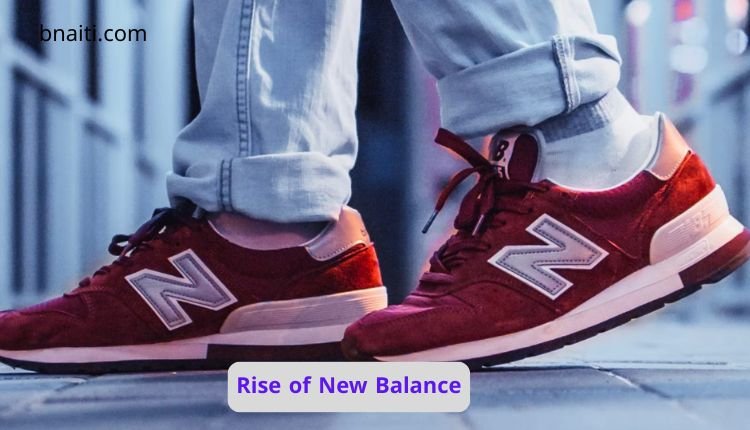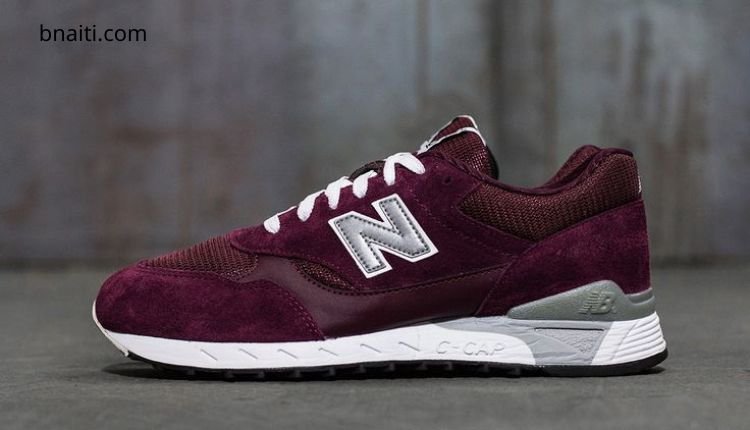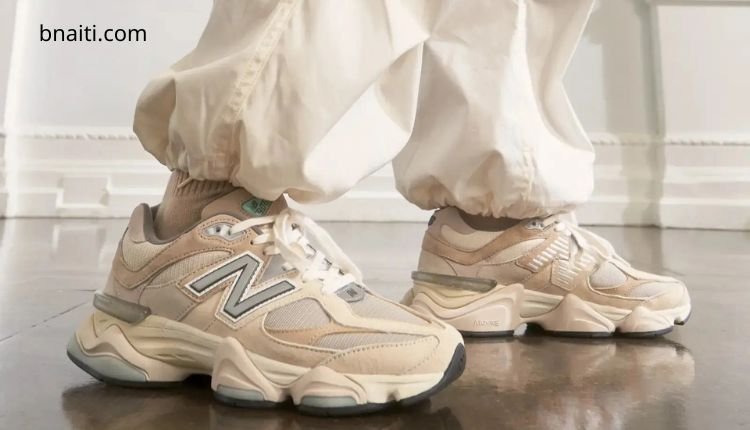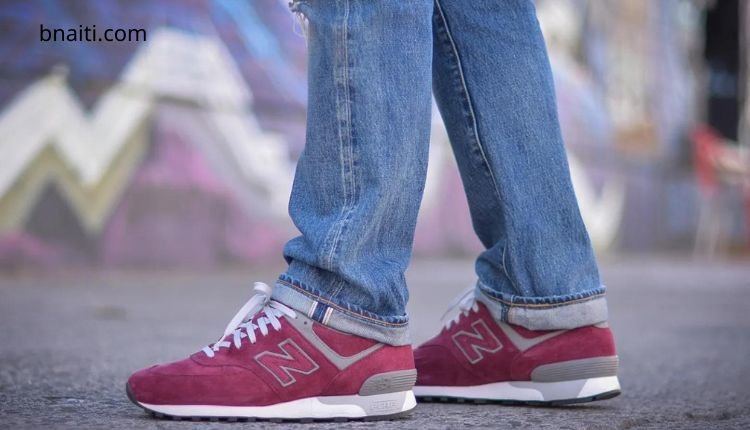The Rise of New Balance: From Dad Shoes to Global Sneaker Powerhouse

For decades, New Balance stood as the quiet outsider in the sneaker world—admired by some for its quality and comfort, ignored by others for its lack of flash. Once seen as the ultimate “dad shoe,” the brand has now become one of the fastest-growing names in the global sneaker market.
Table of Contents
How did a company that prided itself on being “endorsed by no one” end up being worn by athletes, celebrities, and fashion icons alike? The answer lies in a century-long story of craftsmanship, resilience, and smart marketing.
This article explores the full transformation of New Balance—from its humble beginnings inspired by chickens to its modern-day dominance in fashion, sports, and culture.
The Origin Story — How Chickens Inspired Balance
The tale of New Balance begins in 1906 with William J. Riley, a British immigrant living in Boston. His fascination with balance came from an unlikely source—chickens. Observing their three-pronged feet, Riley realized that their perfect balance could inspire better footwear design.
He soon invented an arch support system with three contact points, mirroring a chicken’s foot. This innovative structure provided exceptional stability and comfort, setting the foundation for what would later become the New Balance philosophy: comfort first, style second.
In its early years, the company didn’t even produce shoes. It specialized in arch supports, selling custom-made insoles for policemen and firefighters—people who spent long hours on their feet. At $5 a pair (about $90 today), these supports were expensive but effective, earning the trust of those who valued practicality over price.
The First Sneakers and the Birth of a Brand
By the 1930s, New Balance introduced its first running shoe, made to order for athletes who wanted performance and fit rather than fashion. This focus on functionality would define the company’s DNA for decades.
Then came 1960 and the launch of the Trackster, the world’s first running shoe available in multiple widths. It was revolutionary—not just for comfort, but for inclusivity, recognizing that every foot is different. Runners loved it, and the brand slowly began to build a loyal base among serious athletes.
Still, New Balance remained small. When Jim Davis bought the company in 1972—the same day as the Boston Marathon—it had just six employees producing fewer than 30 pairs a day. Yet Davis saw potential where others didn’t. His vision was clear: build shoes of unmatched quality, and let the product speak for itself.
“Read Also: New Balance Furon V8 Review“
Quality Over Hype — The Early New Balance Philosophy
Jim Davis steered New Balance with a simple principle: quality over quantity. There were no big celebrity endorsements, no flashy commercials, and no gimmicks. Instead, the company relied on craftsmanship, innovation, and authenticity.
In 1982, New Balance released a running shoe priced at $100—a bold move when most sneakers cost a fraction of that. But the brand wasn’t selling cheap thrills; it was selling precision and performance. Runners who valued comfort and quality gladly paid the premium.
This strategy helped New Balance carve out a niche. The shoes weren’t considered “cool,” but they were respected. They appealed to professionals, athletes, and people who valued durability. Over time, this focus on integrity built a loyal customer base—even if it didn’t yet make the brand a cultural icon.
The “Dad Shoe” Era and the Steve Jobs Effect
As Nike and Adidas soared in popularity through celebrity partnerships and bold marketing campaigns, New Balance became known for something else entirely: dad shoes.
During the late 1980s and 1990s, while Nike was defined by Michael Jordan and Adidas by Run-D.M.C., New Balance became associated with suburban comfort and simplicity. Its biggest unofficial ambassador wasn’t an athlete—it was Steve Jobs.
Jobs’ uniform—black turtleneck, jeans, and gray New Balance sneakers—embodied function and minimalism. Although Jobs wasn’t a fashion icon, his tech genius made his look symbolic of innovation and focus. His preferred shoe, the New Balance 992, reflected his philosophy: simple, practical, and perfectly engineered.
The irony? For decades, this utilitarian aesthetic wasn’t fashionable. Until the world changed.
The Rise of the “Dad Shoe” Trend

In 2017, the global fashion scene flipped upside down when Balenciaga launched the Triple S—a chunky, oversized sneaker that defied sleek design conventions. What once looked old-fashioned suddenly became the pinnacle of style.
The “ugly-cool” or “dad shoe” trend swept the industry. And who had been making those very shoes all along? New Balance. Models like the 990, 574, and 2002R fit perfectly into the new retro, comfort-driven aesthetic.
At the same time, cultural shifts amplified this comeback. Gen Z, nostalgic for the ‘90s, embraced vintage-inspired sneakers. The resale market had made hyped releases nearly impossible to get, leading sneaker fans to seek accessible alternatives. Comfort also became king, thanks to the rise of remote work and athleisure.
In short, New Balance was ready for the moment. Without chasing trends, it suddenly found itself leading one.
Chris Davis and the Modern Marketing Revolution
The company’s transformation wasn’t just luck—it was strategic. Enter Chris Davis, son of Jim Davis. Starting at the bottom in 2008 and rising to Chief Marketing Officer by 2020, Chris brought a new vision to the brand.
Historically, New Balance had relied on direct-response marketing—sales-driven ads and discount campaigns. But Davis realized that true brand power comes from cultural influence, not coupons. So he developed a bold marketing strategy known as the 50/30/20 formula:
- 50% Proven Tactics: Strengthen retail presence and maintain core distribution.
- 30% Calculated Risks: Experiment with emerging industries like gaming and esports.
- 20% Experimental Projects: Take bold creative risks, like opening a pub in London where runners could exchange Strava miles for beer.
This fresh, engaging approach made people talk about New Balance in entirely new ways. It wasn’t just a sports brand anymore—it was becoming a cultural movement.
“Read Also: new balance shoes“
The Power of Collaborations — Building Cultural Credibility

To truly resonate with the fashion world, New Balance turned to collaborations. But instead of random hype collabs, they chose partnerships that reflected their heritage and values.
One of the most important was with Aimé Leon Dore, led by Teddy Santis. His retro, understated designs perfectly matched New Balance’s timeless aesthetic. Together, they created collections that were sophisticated, nostalgic, and deeply authentic.
This partnership changed everything. Suddenly, New Balance wasn’t just a brand—it was a lifestyle. Each collaboration told a story that connected craftsmanship with culture. It was no longer about chasing trends; it was about shaping them.
Revenue surged, and New Balance’s image evolved from “dad shoe” to “fashion essential.”
Conquering Sports — The New Balance Athlete Strategy
Lifestyle appeal was one thing, but true sneaker supremacy required success in sports. Nike and Adidas dominated by signing hundreds of athletes. New Balance, true to its selective approach, went for fewer—but deeper—partnerships.
Their philosophy was called “inch wide, mile deep.” Instead of volume, they focused on authenticity and alignment. Every athlete they signed embodied the brand’s spirit of excellence and individuality.
The turning point came in 2019 with Kawhi Leonard, one of the NBA’s quietest yet most dominant stars. His low-key persona fit New Balance perfectly—no theatrics, just performance. That same year, Leonard led the Toronto Raptors to an NBA Championship and won Finals MVP, instantly giving the brand credibility in basketball.
From there, New Balance expanded across sports, signing world-class talents like Shohei Ohtani, Coco Gauff, Sydney McLaughlin-Levrone, and Cameron Brink. Each represented a new generation of athletes driven by authenticity, not hype.
Breaking into Football — A Bold New Frontier

Football (soccer) presented New Balance with its biggest challenge. Competing against giants like Nike and Adidas seemed impossible. Yet, New Balance made strategic moves—starting by sponsoring Liverpool FC during their Champions League victory run.
Though they later lost the contract to Nike, the experience shaped their new direction: focus on individual athletes rather than teams. Today, their football roster includes emerging stars like Bukayo Saka, Endrick, Timothy Weah, Jordyn Huitema, and Jeremie Frimpong.
What makes New Balance’s football strategy unique is its personal approach. Their design team even uses player data to customize features, such as the Speed Control Stud—inspired by Saka’s playing style, allowing sharper acceleration and control.
This commitment to athlete-specific design sets New Balance apart, proving they’re not just making shoes—they’re engineering performance.
Innovation, Integrity, and the Future of New Balance
As of today, New Balance stands at an exciting crossroads. With record-breaking growth, its challenge is maintaining authenticity while expanding globally. Unlike brands built on hype, New Balance’s identity is rooted in quality, community, and timeless design.
Its U.S.-based manufacturing, family ownership, and sustainability efforts continue to distinguish it from corporate giants. The brand’s storytelling focuses on substance over flash, resonating deeply with modern consumers seeking meaning in what they wear.
In an industry obsessed with what’s new, New Balance has redefined what it means to be timeless.
Conclusion: A New Balance in the Sneaker World
From a chicken-inspired arch support in 1906 to a multibillion-dollar global empire, New Balance’s story is a rare one—driven not by hype or celebrity endorsements, but by authenticity, craftsmanship, and courage to stay different.
Its journey shows that you don’t need to chase trends to win; sometimes, staying true to your roots is the ultimate innovation. As sneaker culture evolves, New Balance has already found its stride—balancing performance, fashion, and integrity better than ever before.
In a world of fast-changing brands, New Balance has achieved what its name always promised: perfect balance.
As a dedicated footwear reviewer, I have spent years analyzing and testing athletic shoes across every category, from high-performance running sneakers to lifestyle-inspired basketball silhouettes. My work goes beyond simple first impressions; each review is built on a foundation of hands-on experience, thorough research, and attention to the details that matter most to athletes and casual wearers alike. I aim to bridge the gap between brands’ marketing claims and real-world performance, giving readers an honest, balanced perspective.
My writing style combines technical evaluation with an accessible tone, so both professionals and everyday enthusiasts can understand the strengths and weaknesses of each shoe. Whether discussing midsole cushioning technology, outsole traction, or upper material breathability, I break down complex features into practical insights. Readers trust my reviews because they know I highlight both the benefits and potential drawbacks, helping them make more confident purchasing decisions.
Over time, my work has evolved into a comprehensive resource for anyone seeking guidance on athletic footwear. I regularly compare new releases with previous models to highlight improvements or missed opportunities, while also exploring how different shoes fit specific activities—such as marathon training, weightlifting, or casual streetwear. By staying updated with industry trends and listening to community feedback, I ensure that my reviews remain relevant, informative, and genuinely useful.
Ultimately, my mission is to provide clarity in a crowded market. With countless options available, choosing the right pair of shoes can feel overwhelming. Through in-depth, unbiased, and engaging reviews, I strive to make that decision easier, equipping readers with the knowledge they need to find footwear that truly matches their performance goals and personal style.


